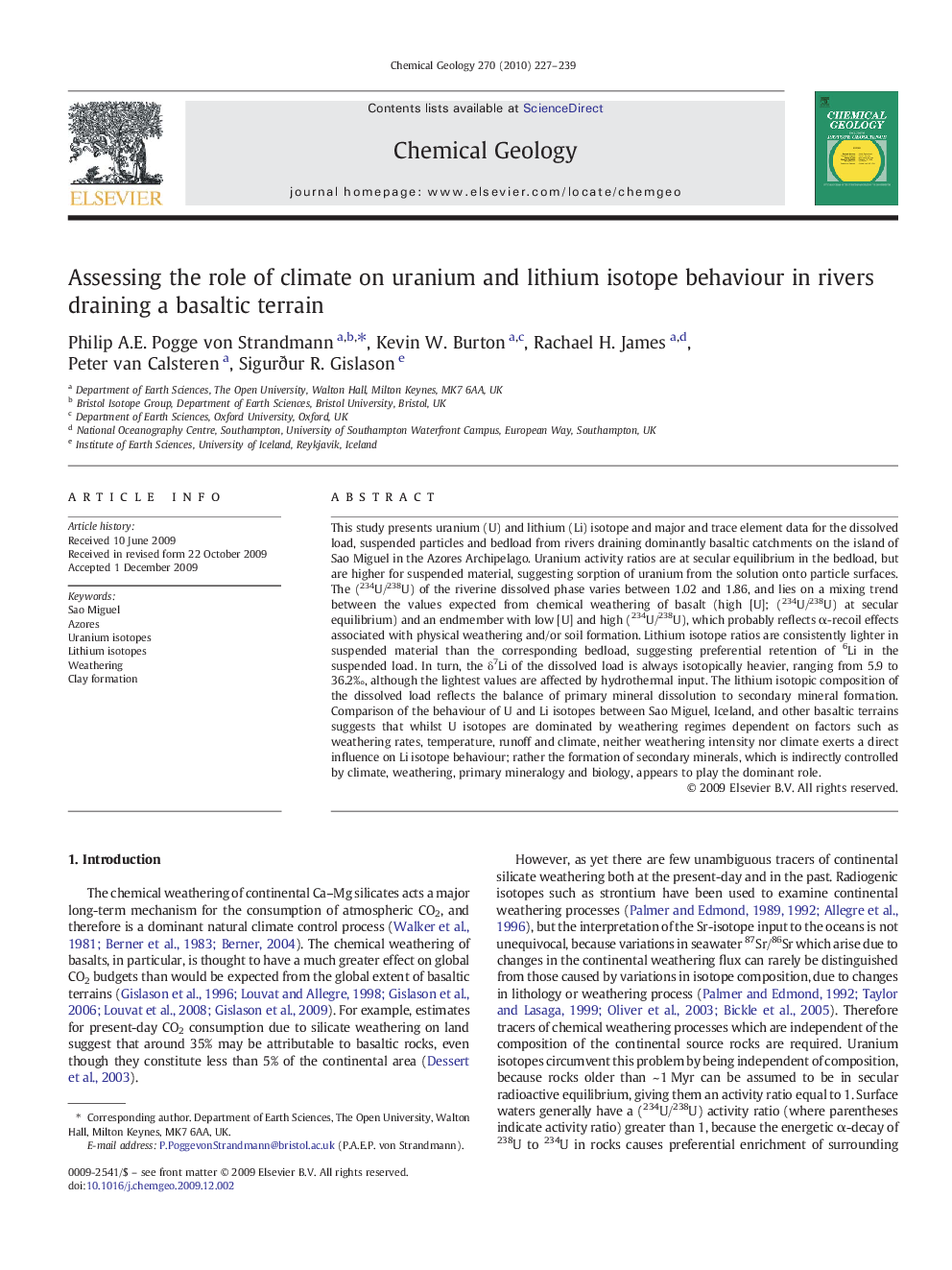| Article ID | Journal | Published Year | Pages | File Type |
|---|---|---|---|---|
| 4700080 | Chemical Geology | 2010 | 13 Pages |
This study presents uranium (U) and lithium (Li) isotope and major and trace element data for the dissolved load, suspended particles and bedload from rivers draining dominantly basaltic catchments on the island of Sao Miguel in the Azores Archipelago. Uranium activity ratios are at secular equilibrium in the bedload, but are higher for suspended material, suggesting sorption of uranium from the solution onto particle surfaces. The (234U/238U) of the riverine dissolved phase varies between 1.02 and 1.86, and lies on a mixing trend between the values expected from chemical weathering of basalt (high [U]; (234U/238U) at secular equilibrium) and an endmember with low [U] and high (234U/238U), which probably reflects α-recoil effects associated with physical weathering and/or soil formation. Lithium isotope ratios are consistently lighter in suspended material than the corresponding bedload, suggesting preferential retention of 6Li in the suspended load. In turn, the δ7Li of the dissolved load is always isotopically heavier, ranging from 5.9 to 36.2‰, although the lightest values are affected by hydrothermal input. The lithium isotopic composition of the dissolved load reflects the balance of primary mineral dissolution to secondary mineral formation. Comparison of the behaviour of U and Li isotopes between Sao Miguel, Iceland, and other basaltic terrains suggests that whilst U isotopes are dominated by weathering regimes dependent on factors such as weathering rates, temperature, runoff and climate, neither weathering intensity nor climate exerts a direct influence on Li isotope behaviour; rather the formation of secondary minerals, which is indirectly controlled by climate, weathering, primary mineralogy and biology, appears to play the dominant role.
